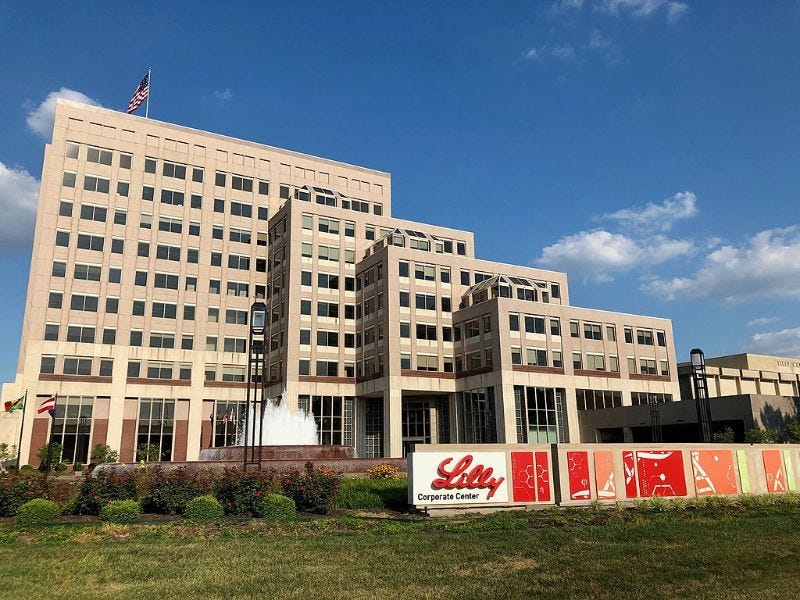

Weekly Dose of Optimism #32
source link: https://www.notboring.co/p/weekly-dose-of-optimism-32
Go to the source link to view the article. You can view the picture content, updated content and better typesetting reading experience. If the link is broken, please click the button below to view the snapshot at that time.

Weekly Dose of Optimism #32
Insulin Price Cuts, SpaceX Launch, Mind-Reading, Lower Rents, Build-Nothing Country, Fount
Hi friends 👋,
Happy Friday and welcome back to our 32nd Weekly Dose of Optimism. This was one of those weeks where, come Thursday morning, I had no idea what I was going to write about. But, if you look harder enough, in the right places, it turns out there’s tons of optimistic stuff happening all around us.
Let’s get to it.
The Weekly Dose is brought to you by…Sprig
Sprig lets you go beyond analytics and improve your product experience with user insights, delivered fast. The world’s best product teams, including those at Notion, Loom, and Robinhood, use Sprig’s in-product surveys and prototype tests to capture insights rich from their users and build better products.
Sprig is powerful on its own, but you can unlock its real power when you integrate Sprig with the rest of your tech stack to effortlessly turn insights into actions. That’s why Sprig is excited to announce a new one-click integration with Amplitude. This highly-requested integration helps product managers pair Amplitude’s product analytics with Sprig’s qualitative user feedback to understand the “why” behind users’ actions. Imagine launching an A/B test and actually knowing why one version outperformed the other. Or noticing a drop-off and being able to precisely identify the cause of it.
Here’s what you can do with the Sprig and Amplitude integration:
Continuously track your critical user journeys to surface pain points and understand how to solve them.
Detect trends in your conversion or onboarding flow and pinpoint the exact reasons driving them.
Collect user feedback and analyze the results by segment or create your own cohorts.
(1) Eli Lilly to Cut Price of Insulin Drugs by 70%, Cap Patient Costs at $35
Peter Loftus for The Wall Street Journal
The company also said that on May 1 it would reduce the list price of an unbranded insulin it sells to $25 a vial from $82 a vial, the lowest level for any insulin that diabetes patients take around mealtimes, and less than Lilly’s list price for a Humalog vial in 1999. And it plans to improve a program capping patients’ out-of-pocket costs at $35 a month.
It is hard to praise a company for lowering its prices on a necessary drug by 70%. Why? Because that means they’ve been price gouging for years. That said, this move is life-changing for diabetes patients that are not properly insured or are otherwise financially insecure. I personally couldn’t imagine having to decide between dinner or medication, and for many people, that is the choice.
Again, we’re not going to praise Eli Lilly or any specific company here, but the hope is that a move like this drives down the price for similar medications on the market and generally makes predatory pricing practices in pharma a bit more unacceptable.
Profits are important. They are the incentive for startups and big pharma companies alike to take financial risk, innovate on moonshot drugs, and spend years and years on expensive R&D and arduous approval processes. And Eli Lilly for sure has thoughtful rebuttals on how manufacturer rebates have gone up, and market pricing dynamics, and yada yada, but the fact is that they have priced-out life saving drugs from people that need it the most. We’re just glad these cuts are in place.
(2) SpaceX launches its 9th crewed mission as it heads to space station
Russel Lewis for NPR
Early Thursday morning, SpaceX launched its Crew Dragon capsule with four people aboard from the Kennedy Space Center. This is SpaceX’s ninth time sending astronauts into space over the last 3 years, and the seventh time they’ve done so in partnership with NASA.
The mission is meant to swap out the astronauts currently stationed at the International Space Station. Important work indeed, but nothing overly groundbreaking from a news perspective. But, at least in my mind, manned space missions are still a big deal. You can hear mission control getting all fired up in the video. It’s obviously still a big deal for them. Here’s to hoping for a future in which manned space travel is as common as commercial airflight, and cheering upon takeoff/landing is just kind of a weird kitschy thing we do.
(3) Stable Diffusion with Brain Activity
Yu Takagi and Shinji Nishimoto from Osaka University and NICT
Here, we propose a new method based on a diffusion model (DM) to reconstruct images from human brain activity obtained via functional magnetic resonance imaging (fMRI). More specifically, we rely on a latent diffusion model (LDM) termed Stable Diffusion.
Soooo Stable Diffusion can read people’s minds now.
Researchers in Japan showed people images, scanned their brains in an fMRI, and performed visual reconstruction of the images in Stable Diffusion. It worked surprisingly well — those pictures above show the images people were shown and the images Stable Diffusion reconstructed.
What’s maybe most incredible is that no training or fine-tuning of the deep models was needed to make it happen. The only training required was creating models that map fMRI signals to latent diffusion model components, essentially giving Stable Diffusion something it could read.
The paper hasn’t been peer reviewed yet, but it’s a pretty stunning testament to the surprising out-of-the-box capabilities of these models.
Speaking of which… Zack Witten discovered that Bing Chat can play chess. There are already chess-playing models, of course. Deep Blue beat Kasparov in 1997, and most top chess players today use the Stockfish Chess Engine. But Bing doesn’t use a Chess-specific model, it uses GPT-X. The fact that a general LLM can play Elo 1100-1200 chess with no specific training is pretty unbelievable. It seems like we’re just scratching the surface on what large language and latent diffusion models can do.
(4) Apartment Rents Fall as Crush of New Supply Hits Market
Will Parker for The Wall Street Journal
Apartment rents fell in every major metropolitan area in the U.S. over the past six months through January, a trend that is poised to continue as the biggest delivery of new apartments in nearly four decades is slated for this year.
Thank the Lord. Living in Manhattan for the past year has been disgustingly expensive. Manhattan rent has always been expensive, but the last year really felt like landlords were taking out some Covid-induced stress on prospective renters. “Yes, remember those Covid deals you all signed and bragged about in early 2021? Well this is similar a deal, but monthly rent is going up 10% and those two free months are gone…so net rent is effectively up 30%.”
And there’s a reason NYC landlords and landlords all across major U.S. cities could pull this off. There simply aren’t enough apartments to comfortably accommodate all of the people moving to major cities. But supply is starting to come on line to meet that demand, and that is lowering (or at least stalling increases) rents.
This is a reminder that building is good. More housing, all else equal, means lower living costs. A win for YIMBYs!
Noah Smith for Noahpinion
Oops, we did it again. Another Noah Smith post. But, in fairness, this is already his most “hearted" post on Substack (from what we can tell) and directly relevant to the post on building above.
The essay is, essentially, a well-evidenced rant on America’s inability to build new things and the consequences of that inability. He takes on housing, transit, green energy projects, and even semiconductors.
His conclusion is that America is willing to spend on big projects, but that spending doesn’t necessarily manifest as changes in the built world. $5B earmarked for green energy projects in some bill, doesn’t necessarily mean we’re getting $5B worth of green energy projects. It just means that $5,000,000,000 lives somewhere in some beaurocrat’s spreadsheet.
Why is this the case? According to Smith, this is the great American subsidy. America’s ability to spend, but inability to build is preserving the built environment around us. Your house value stays high, your neighborhoods remain spacious, your streets inaccessible via transportation to rifraf, This seems like a no-cost subsidy but it’s not.
The costs are real, and Americans pay the costs. They pay them in the higher tax bills that citizens pay to fund infrastructure. They pay them in the increased prices businesses have to charge to make up for higher land costs. They pay them in higher rents. They pay those costs in more expensive electricity and increased carbon emissions. They pay them in the lower wages that workers earn because their cities can’t build sufficient housing near to the areas of greatest economic opportunity. They pay them in lower productivity because cities can’t grow big enough. They pay those costs in lost wages and incomes from disinvestment, when companies decide that America’s obstacles to land development make it a bad country to build a factory in. And eventually they pay the cost of a weak country that doesn’t have the economic strength to stand up to rivals like China.
The stakes for building are high. And if America doesn’t step up to the plate (we’re hopeful we will) some other country will.
Bonus: Not Boring Founders: Andrew Herr, Fount
We’re going to pump our own book for a second here, but in this case, we think it’s mutually beneficial. Packy and Andrew Herr, founder and CEO of Fount, just dropped a new episode of Not Boring Founders. They discuss Packy’s fitness and health journey. Packy went from a low-energy, kinda fat new dad to this (asked for shirtless selfie, but did not get approval) largely thanks to working with the Fount team.
The name of the game is customization. Whatever plan works for Packy today, may not work for Packy 6 months from now, and definitely won’t be optimized for you. Andrew’s company Fount takes customization to a whole new level: bloodwork, personalized supplement plans, nutrition and fitness plans, 1-on-1 training with former Navy Seals, etc. Today, Fount is expensive, but that’s just part of its larger plan to make customized health programs available to anyone. It’s running a series of experiments on early customers in order to build data sets and software that make customized health plans accessible to everybody.
Health and wellness awareness is seemingly becoming mainstream. Huberman’s podcast is the #4 podcast in the entire world right now. And with this rise, there’s been a rise of questionable health information and influencers springing up. Andrew Herr is not one of them. Check out the convo for a real Fount of knowledge.
Did you enjoy reading this Weekly Dose of Optimism?
(Powered by Sprig)
That’s all for this week. We’ll be back in your inbox on Monday.
Thanks for reading,
Recommend
About Joyk
Aggregate valuable and interesting links.
Joyk means Joy of geeK







